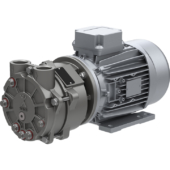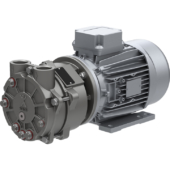 Add My Company
Add My Company

Vacuum pumps are used for a variety of purposes in a variety of industries. Vacuum pumps remove gas from a sealed volume to create a partial vacuum. Fluids rush into the vacuum as a result of pressure gradients. The different types of vacuum pumps are rotary piston pumps, diaphragm vacuum pumps, liquid ring vacuum pumps, scroll vacuum pumps and turbomolecular vacuum pumps.

The Basic Operation of an Industrial Vacuum Pump
Regardless of technology, the basic operating principle of the type of vacuum used in industries remains the same.
Vacuum pumps extract air molecules (as well as other gases) from the vacuum chamber (or the outlet side in the case of a higher vacuum pump connected in series). As the pressure in the chamber decreases, removing additional molecules becomes more difficult. As a result, an industrial vacuum system (Fig. 1) must be capable of operating over a portion of an extremely wide pressure range, typically ranging from 1 to 10-6 Torr / 1.3 to 13.3 mBar. This is extended to 10-9 Torr or lower in research and scientific applications. To accomplish this, various types of pumps are used in a standard vacuum system, each covering a portion of the pressure range and occasionally operating in series.
For more information on Different Types Of Vacuum Pumps For Different Applications talk to Speck ABC UK Ltd

